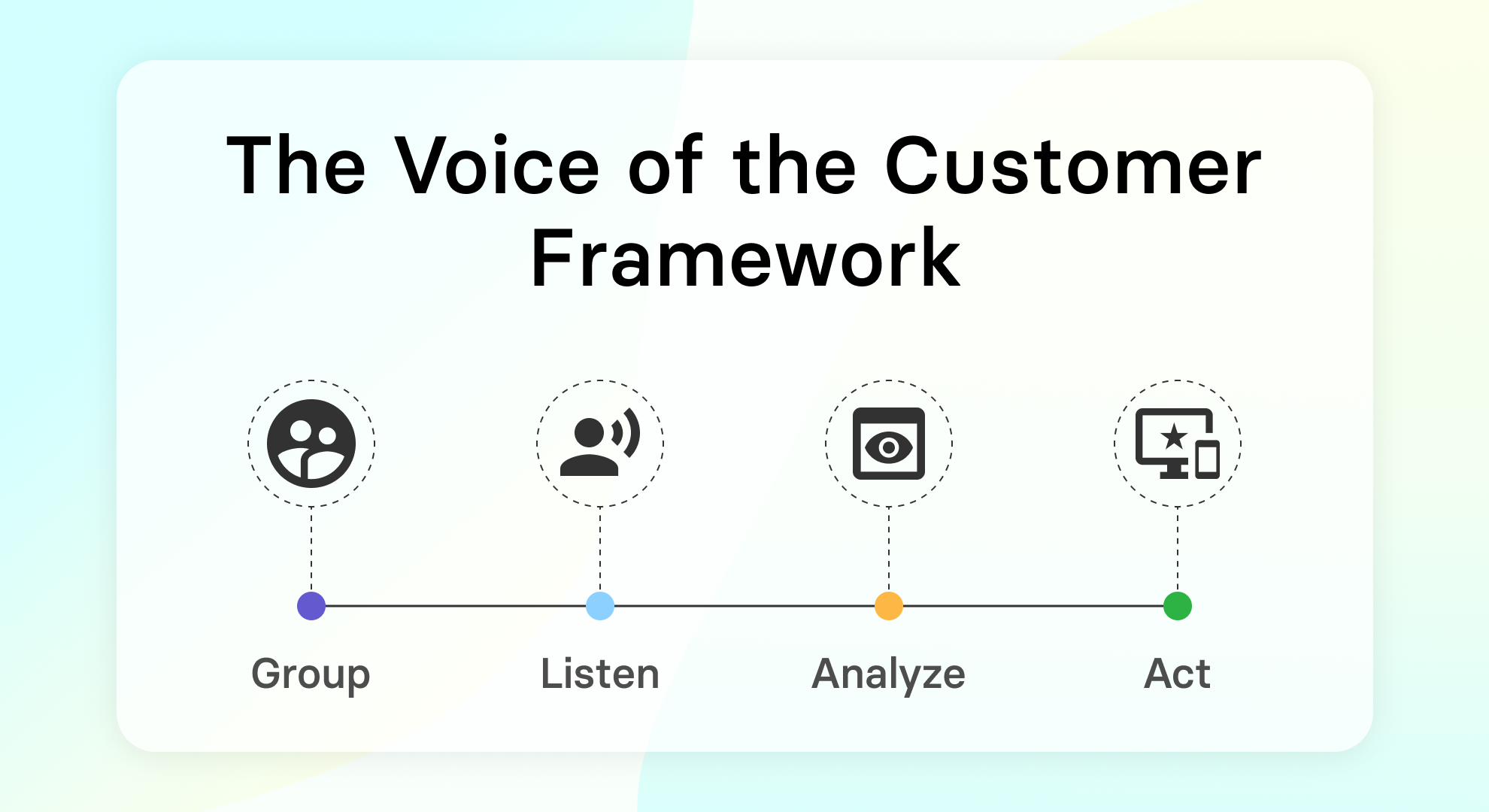Voice of the Customer, commonly referred to as VoC, refers to any strategy or plan to collect, incorporate, and act upon customer and user feedback on your mobile, web, or desktop app. VoC programs take customer feedback a step forward - they plan for the actions you can take on the basis of the collected feedback. In this article, we look into how product managers can set up and implement VoC programs.

Business growth and product innovation are no longer determined without the input of actual users. Businesses need to increasingly take on a customer-centric approach for their business and product development.
The VoC program is instrumental in this, closely tied to Customer Experience (CX) and Customer Success (CS). According to IDC’s CIO Agenda Predictions of 2021,
“By 2025, 80% of CIOs alongside LOBs will implement intelligent capabilities to sense, learn, and predict changing customer behaviors, enabling exclusive customer experiences for engagement and loyalty.”
In the face of tough industrial competition and rising customer needs, customers need to drive the majority of product innovation. As mentioned in an earlier article, product growth and innovation cannot exist without the inclusion of the customer you are selling to.
So what goes into a VoC strategy?
Setting up an effective Voice of the Customer plan requires four steps.

Being able to run a VoC program starts by being open to accepting its impact and acting on its insights. Without company-wide understanding for the need of a VoC program, any time and money invested within it will be wasted. Furthermore, to take effective action on VoC insights, members from different teams - product, engineering, sales, marketing, and others - must collaborate. Which is why, a VoC plan needs to begin by ensuring that everyone is on the same page about the importance and need of the plan.
Now that you have identified who requires input from customers and how product development can be influenced through this information, it is time to identify how you will collect this information. Customer feedback can be undertaken in a multitude of ways. In this article, we delve into the many options you have and how some bring more advantages than others. In short though, you can opt for surveys, ratings, NPS®, and interviews, as well as monitor social comments, your support center, and email to see what users are saying about you and your product.
Once you have customer feedback, it’s time to analyze the many data points collected. What’s crucial here is to understand feedback and comments within the larger picture. Basing feedback collection on behavioral segments, including application performance as a criterion in the feedback, understanding trends noticed previously - all of this plays a role in how you analyze and assess the VoC data collected. This is the primary reason that VoC should be integrated with your user and product analytics. Furthermore, with multiple teams sharing their data and input, the data collected becomes that much easier to analyze, incorporate into patterns, and take action upon.
Having collected the necessary data (as a starting point), looked into it as part of the whole customer experience analytics, and included multiple teams in the discussion, it is now time to determine action steps. Have numerous people rated a new update low in spite of it being launched after numerous requests? Roll out an A/B test to see if a different version of the same feature is received better. Got a lot of detractors? Send out a detailed survey to understand the cause of their dissatisfaction. Received multiple suggestions on a new feature? Develop the necessary update and send out a push notification to build buzz around its launch. Acting on feedback collected through a VoC plan requires constant reiteration, making innovation and testing a necessity.
While VoC plans can be great to understand what your customers want and ensure that your product meets those requirements, it is crucial to not look at them as a one-time thing. It is important to keep engaging with your customers, keep listening to your users; that’s the only way to build a product that is consistently meeting (or even exceeding) expectations, and beating competition.
To make the most of your VoC strategies, ensure that you are incorporating it into a wider product analytics strategy. At Countly, we’re big on being strategy-driven when collecting product and user data. Which is why we have a host of features, the data of which can be applied to each other to get even more insight that any member influencing product development will find useful. And, we include action-oriented features such as push notifications, remote config, and A/B testing to give you even more from your web and mobile analytics.
To know more about implementing Countly in your web, mobile, or desktop app, talk to our analytics experts today.